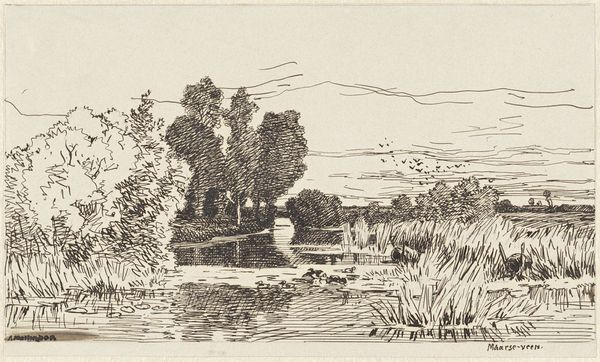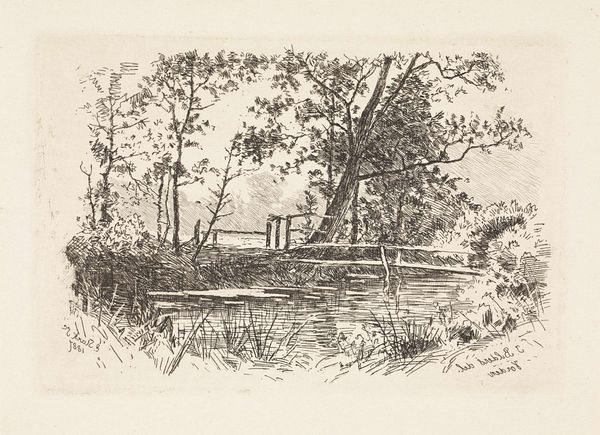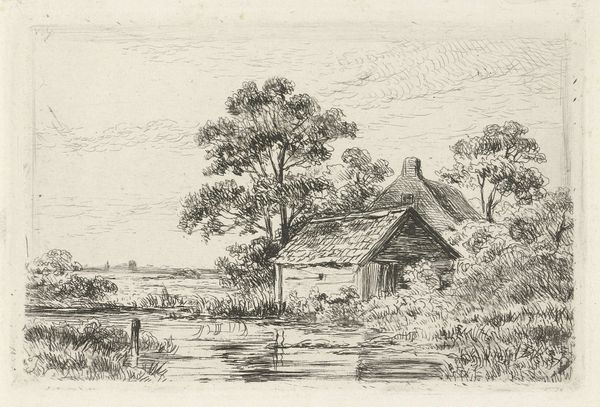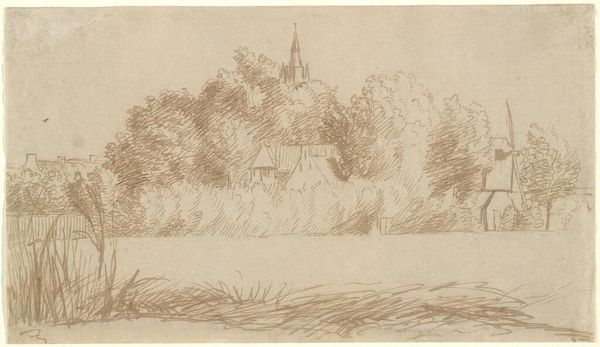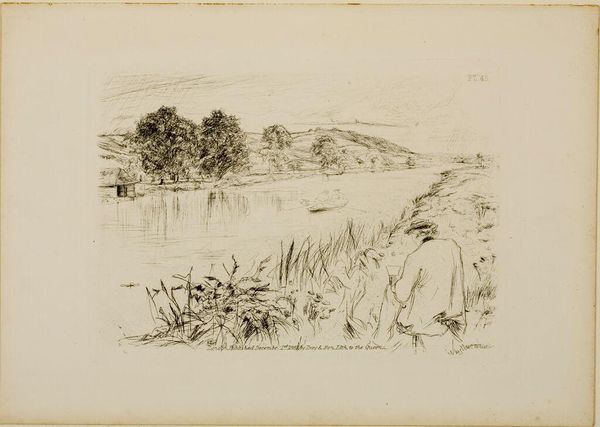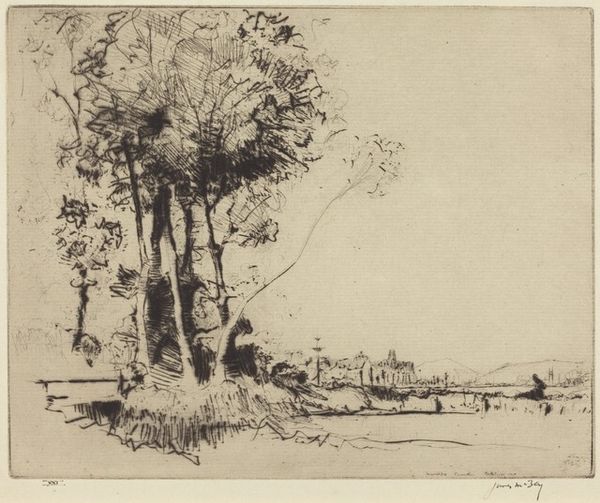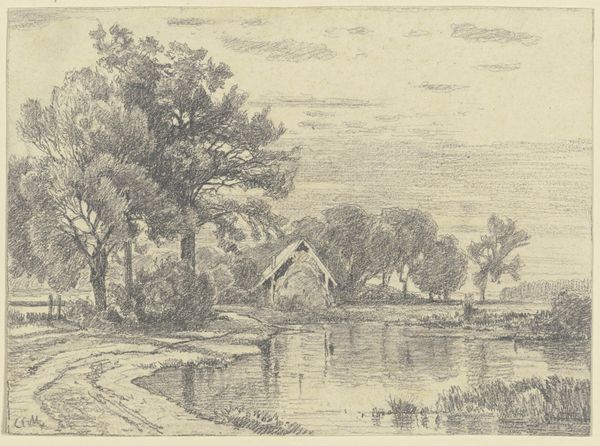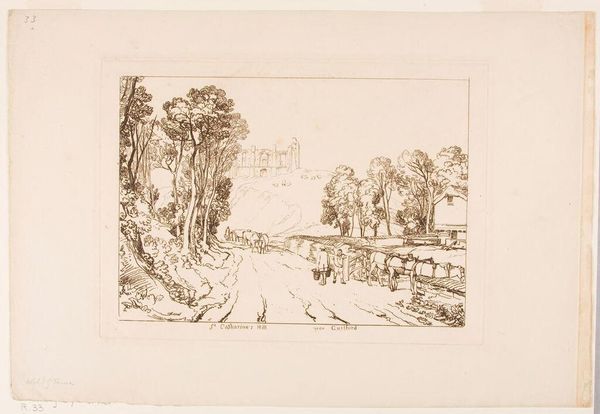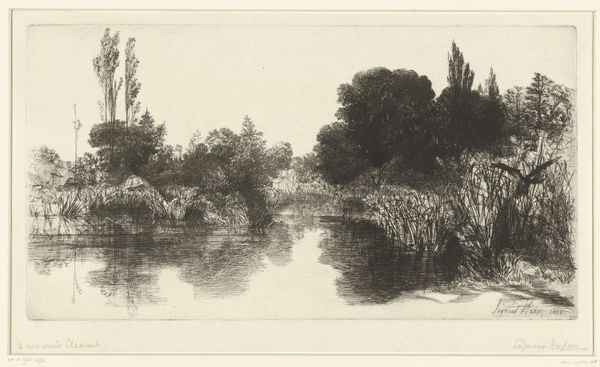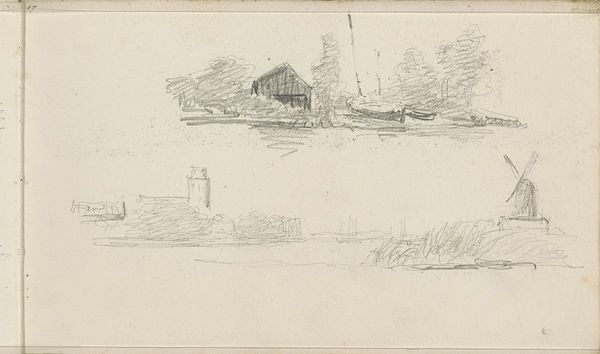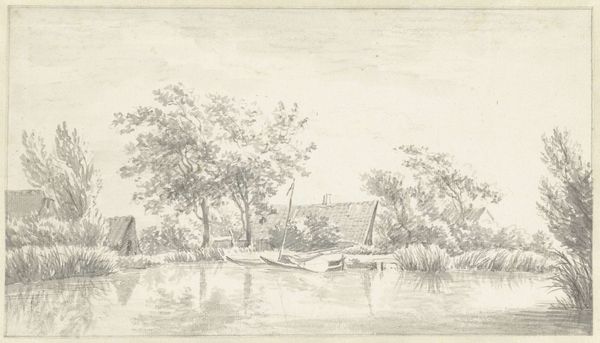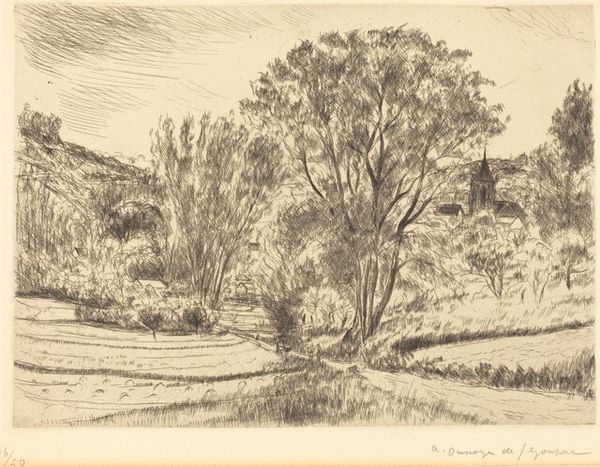
drawing, print, etching, ink
#
drawing
# print
#
etching
#
landscape
#
ink
Dimensions: plate: 18.7 x 34.8 cm (7 3/8 x 13 11/16 in.) sheet: 32.5 x 49.6 cm (12 13/16 x 19 1/2 in.)
Copyright: National Gallery of Art: CC0 1.0
Curator: "Bord du Canal et Ducy," created in 1952 by Louis Joseph Soulas. It's a beautiful landscape rendered in etching, ink, drawing and printmaking techniques. Editor: I find it wonderfully serene, but almost haunting in its stillness. It gives you this muted quiet, like the hush before a rain. Curator: The composition leads the eye nicely—we start with the boat gently floating in the canal and then progress along the towpath towards the town with that magnificent medieval tower on the hill. A scene full of rich, historically charged imagery. Editor: I love the texture Soulas achieved; look at those skeletal trees reaching out as if to grasp at something. The houses perched up on the hill remind me of a cluster of old stories, each dwelling holding secrets. There’s such a sense of time having settled on this place. Curator: Note the prominent use of bare trees; a visual signifier in Western art—frequently emblematic of loss or the waning of time. This element may tap into a broader sense of collective memory of disruption and recovery in post-war Europe. Editor: Or perhaps it's simpler than that. Perhaps they are just ordinary trees. To me, this landscape feels both deeply personal and archetypal. I sense solitude but also a sort of patient observation. It almost feels as if the scene remembers something I have forgotten. Curator: Memory is intrinsic to symbolism—images collect associations through lived experience and cultural repetition. Even in its quietude, there are complex stories being implied, reflecting on themes like community, resilience and belonging. Editor: Ultimately it’s a feeling. A feeling I find lingering within its lines and forms. What else can one say except it moves something within, perhaps because we find echoes of ourselves reflected in such images. Curator: Indeed. This visual language invites us to engage not only with the art object itself but with our internal landscapes as well.
Comments
No comments
Be the first to comment and join the conversation on the ultimate creative platform.
